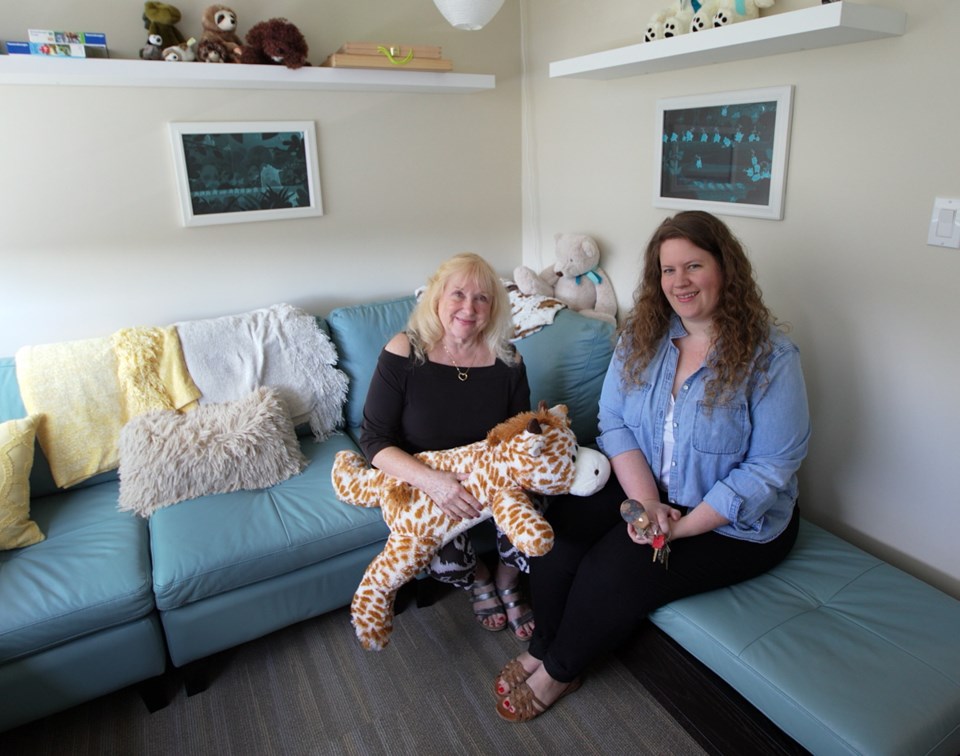The medical exam table at Victoria’s newest space for survivors of violence is covered in a purple quilt, hand-made by one of the forensic nurses.
On the walls are photos of a sunset and shoreline. And in the hall hang children’s drawings.
It’s a stark contrast to the harried emergency-room experience faced by many people who are sexually assaulted.
“We’re asking: How can we reduce trauma for somebody throughout this process?” said Lindsay Pomper, resource development manager for the Victoria Sexual Assault Centre.
“It can be an overwhelming, hard process for people, so you want to ensure that it’s [as] supportive as possible, and also create an environment where that person is in control of what happens to them and what happens next.”
The clinic at the Victoria Community Resource Centre, on Cedar Hill Road near Finlayson Street, is the first of its kind in British Columbia.
But it’s just one element of the centre. In the same facility, a person can meet with victim services support workers and counsellors, as well as talk to police in a room equipped with recording equipment. It’s a joint project between the Victoria Child Abuse Prevention and Counselling Society and the Victoria Sexual Assault Centre, and involves partnerships with Island Health, local police and RCMP, Crown counsel, victim-services teams and various counselling and support programs.
“Prior to this, the survivor would have to go to the hospital, then go to the police station, then come here for counselling. Now, it’s all happening in one place,” Pomper said. “People are coming to the survivor.”
It’s still up to individuals to decide what services they want, she said. There’s no requirement to get a medical exam or talk to police — but everything is in one place.
The space is open to people of all genders and gender identities.
Since opening at the end of February, 22 children and youth, as well as 27 people who were sexually assaulted, have used services through the centre.
The majority of children who use the service have experienced sexual abuse, but some come from homes where physical or domestic abuse is chronic.
They begin in a “soft room,” a bright space with stuffed animals and games on the shelves, used for receiving and debriefing. Their parents can wait there with a victim-services worker, while the children speak with a police officer in what looks more like a living room than an interrogation room.
The setup allows support workers to be brought into the process earlier.
“Normally, we would not have been involved in the beginning. We usually get those children and youth just before they go to court,” said Sandy Bryce, executive director of the Victoria Child Abuse Prevention and Counselling Centre.
“Research is so strong, saying that if you provide services from the very beginning for a victim, the outcome is just way better, no matter what happens in the system. So it’s one way we can do something different in the system, when there are so many ways we can’t.”
There have also been some indirect benefits to children. Building a closer relationship with partners such as the police has helped increase access to counselling services, she said.
The judicial system, for example, allows victims to apply for counselling through the Justice Ministry, on the basis of criminal injuries.
But child-sex offenders have a high risk of suicide, which means sometimes a police file isn’t opened because there’s no longer an offender, Bryce said.
“Now, we have police write a letter, saying they did an interview, that the offender committed suicide, that they have reason to believe something happened,” she said.
“If we hadn’t been around the table together, we wouldn’t have been able to have that conversation.”
The new centre is not replacing the Victoria Child Abuse Prevention and Counselling Centre or the Victoria Sexual Assault Centre. Both organizations continue to offer support through their primary facilities.
Support is available any time by calling the crisis support line at 250-383-3232.



